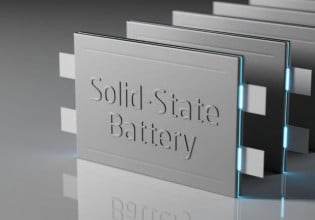Grounding and Bonding to Prevent Static Electricity in the Petroleum Industry
Learn how to prevent the threats of static electricity in flammable gas and vapor-laden atmospheres.
Bonding and grounding provide the most effective means of preventing the buildup of static charges that can cause sparking of sufficient magnitude to ignite the atmosphere in a hazardous location.
Figure 1. Aerial view of an oil and gas refinery in Bangkok, Thailand.
Many precautions have been developed over the years to prevent fires and explosions resulting from static discharges. These precautions include mechanical, chemical, and procedural methods. Significant mechanical steps are bonding and grounding.
Although not entirely safe methods, bonding and grounding are valuable ways of preventing static charges from igniting the atmosphere in a hazardous location. Bonding is a tight electrical connection between all metallic objects – such as pipes and tanks – while grounding connects these objects to the earth.
Figure 2. Bonding and grounding. Image courtesy of OSHA.
Adequate bonding and grounding ensure that everything is at the same ground zero potential and allows the safe discharge of electrostatic electricity to the earth – preventing static sparks. It is also valid to ground each object separately when corrosion, vibration, or maintenance activities may break the bonding connections.
Standard Bonding and Grounding Practices
The following are some standard practices for bonding and grounding equipment handling flammable liquids, gases, and vapors.
Tanks and Vessels
Ground the shell of tanks that contain flammable products and those without flammable products but located in a hazardous area. Grounding the shell drains the outside charge but does not remove the chance of sparking inside the tank.
Locate a grounded, floating, metallic element on the internal surface of the tank that touches the flammable liquid if a tank or vessel has a vapor space. Use a floating-roof to help prevent surface sparking inside the tank and minimize the vapor phase volume. Bond the roof and any floating internal blanket to the tank’s shell.
Figure 3. Floating roofs, such as the one seen in this system designed by ZINO, are an option for static protection by providing surface sparking. Image courtesy of ZINO.
- Metal tanks or vessels resting on earth and grounded for lightning protection do not need separate static protection.
- Place a grounded metal plate in the bottom, contacting the liquid or a metal surface on the coating, when a metal tank has a non-conductive liner. A tank liner is a material used to create a strong, thick film and helps prevent chemical contamination, corrosion, and leakage. These liners come as specialized fabrics made from different heavy-duty materials.
- Bond the supply pipe and the tank.
- Wrap tanks and vessels with a grounded metal sheath or foil when made of non-conductive material.
- Bonding and grounding may not be enough with a low conductivity liquid. A safe practice calls for a relaxation time of about one minute and a flow rate reduction.
Tank Trucks
- Ground tank trucks before loading or unloading and keep them connected throughout the operation. There is still a chance of an internal spark discharge in a grounded tank.
Figure 4. An example of equipment to ground a tank truck. This setup is the e Earth-Rite II RTR. Image courtesy of Newson Gale.
- Make the ground connection before raising the dome covers and disconnect after closing them when loading through open domes.
- Bond the truck’s body and tank.
- Bond the hose’s nozzle to the tank before opening it.
- Bring the hose to the bottom of the tank or fill it from below – bottom loading - to avoid splash filling. When bottom loading, reduce the loading velocity to lessen the static generation and give the static charges time to reach the tank’s grounded sides and dissipate.
- Employ ground proving systems to test the truck’s ground connection before allowing the loading pumps to operate.
Railcars
- Recommendations are similar to those for tank trucks.
- Although the railroad tracks connect the car to the ground, bond nonconductive wear pads and bearings to the loading rack ground. Also, bond the rails to the loading pipes to prevent stray-current arcs.
- Bond the hose’s nozzle to the tank before opening it.
Tankers
-
Do not bond the ship and shore because it has no significance to electrostatic charging and may be dangerous due to the arcing produced during connection and disconnection.
- Use insulation flanges to prevent the flow of stray currents between the ship and shore. Note that static electricity and stray currents (i.e., current flowing through anything other than the intended electrical circuit and often due to wiring or imbalance issues) are different risks.
Metallic Piping
- It does not require additional grounding when it is electrically continuous and in contact with an adequately grounded system.
- Do not allow the piping system components to become intentionally or accidentally isolated by gaskets – such as gasketed flanged joints – linings, paint, oil film, and similar. Bond any isolated sections.
- A word of caution: pay attention to the cathodic protection system, as gaskets can serve to isolate the protected area. Consult the specialists in cathodic protection before installing jumper cables across elements containing insulating gaskets.
Non-Conductive Piping
- Wrap a grounding wire around the pipe.
Jet Nozzles
- Ground the nozzles and other equipment expelling gases or liquids from jets or performing processes such as sandblasting and shotcreting.
Aircraft Fueling
- The dispenser supplies fuel by connecting the pressurized airport’s hydrant pit to the airplane’s fuel tank through a filter. Bond the dispenser and the aircraft. Connect before removing the filler caps and disconnect after completing the fueling and replacing the filler caps. Do not bond the dispenser or the plane to the hydrant pit.
Figure 5. An accident caused by improper bonding. Image courtesy of Federal Aviation Administration.
Personnel
- In addition to facilities, ground the operators during specific actions. The grounding devices for operators should prevent hazardous charge accumulation without raising the risk of electrocution. Personnel grounding must limit the current to ground to less than 3 mA – the “soft grounding” method – to prevent injury from electric shocks and stray currents.
- Use specialized flooring and grounding fabrications worn on the wrists or over the shoes.
Figure 6. The VESX45/PGS personnel grounding system with grounding straps. Image courtesy of Newson Gale.
Wear antistatic footwear. Antistatic footwear dissipates electrostatic charges and protects against electrocution.
The Grounding Electrode
- It is essential to bond all items prone to develop static charges and connect the whole thing to the ground through a grounding electrode. A “static” grounding electrode is less rigorous than a high current grounding network because the discharge current is less than 1mA. It is then unnecessary to build an additional grounding system for static protection, and the connection to earth may employ the system, equipment, or lightning protection grounding electrodes.
- A conservative criterion for setting the value of resistance to ground is to ensure that it is small enough to keep the object’s maximum stored energy below the MIE of the flammable mixture. Resistance to ground lower than 1 MΩ is generally acceptable.
Grounding Systems to Limit Corrosion
- Many process facilities have grounding systems to limit the effects of corrosion induced by electrical charges. An extra benefit of these grounding systems is their help to dissipate the charges that could be a source of ignition. They prevent corrosion and are effective for static grounding purposes.
Other Methods to Reduce the Charge Accumulation
Other standard measures to limit the charge accumulation on fluids are:
- Antistatic additives: increase the fluid’s conductivity.
- Humidification: increases the fluid’s conductivity.
- Charge relaxation: gives time to dissipate the charge.
The methods mentioned above require a connection to the ground to transfer the charge. Other methods include:
- Restrict the flow velocity in pipes and nozzles.
- Remove the flammable atmosphere by purging — introducing a non-combustible “purge gas” into a closed system such as nitrogen — or eliminating the vapor space using a floating-roof. This technique mitigates potentially explosive conditions.
Safety Standards
It is vital to use guidance for the safe handling of products in hazardous atmospheres. Take directions from the many recommended practices in this field or by expert advice.
Codes of practice issued by various organizations and companies describe safety precautions to prevent electrostatic discharge hazards. As the original basis may change due to product properties and equipment changes, the organizations and companies periodically review the codes.
Some standards are:
- API Recommended Practice 2003, “Protection Against Ignitions Arising Out of Static, Lightning, and Stray Currents.”
- NFPA 77, “Recommended Practice on Static Electricity.”
- NFPA 407, “Standard for Aircraft Fuel Servicing.”
Reviewing Grounding and Bonding to Prevent Static Electricity Menaces in the Petroleum Industry
The expertise in static electricity gathered in the petroleum and chemical industries initiated practices to handle hazardous locations in such a way as to avoid fires and explosions.
Bonding and grounding are the best and straightforward ways to dissipate the accumulated static charges quickly and lessen the hazards associated with charge buildup on plant items. Also essential is the personnel’s earthing via charge dissipative shoes, floors, and specialized grounding assemblies.
The required resistance to the ground is less than 1 MΩ. The power system, equipment, and lightning grounding electrodes qualify as static grounding electrodes due to their low resistance – less than 5Ω.
Other methods to control electric charge buildup include liquid conductivity augmentation, relaxation, flow speed reduction, purging, and inerting.
It is vital to follow the recommended practices outlined in codes of practice to avoid unsafe conditions that might produce fires and explosions.







